Medical Sciences
Unmasking the Mysteries Of Anesthesia,Exploring the Depths of General and Local Procedures & Their Complications

The Art and Science of Anesthesia Understanding Types and Potential Effects
Introduction Of Anesthesia
Anesthesia is a carefully managed, transient state of reduced sensation or consciousness intentionally induced for medical reasons.
It encompasses various components, such as analgesia for pain relief or prevention, muscle relaxation leading to paralysis, amnesia causing a loss of memory, and the induction of unconsciousness.
An individual experiencing the effects of anesthetic drugs is described as being under anesthesia, while the professional administering the drugs is called an anesthetist.
Anesthesia facilitates the pain-free execution of procedures that would otherwise necessitate physical restraint in an unanesthetized individual or be technically unattainable. There are three primary categories of anesthesia,which have been described below in detail separately

- General Anesthesia: This method suppresses central nervous system activity, leading to unconsciousness and a complete lack of sensation. It employs injected or inhaled drugs.
- Sedation: This approach diminishes central nervous system function to a lesser extent, reducing anxiety and impeding the formation of long-term memories without inducing unconsciousness.
- Regional and Local Anesthesia: These techniques block the transmission of nerve impulses from specific body parts. They can be employed independently, allowing the individual to remain fully conscious, or in conjunction with general anesthesia or sedation.
- Local Anesthesia Involves direct infiltration by the clinician onto the area of interest, such as numbing a tooth for dental procedures.

- Peripheral Nerve Blocks: Utilize drugs targeted at peripheral nerves to anesthetize a specific part of the body, like an entire limb.
- Neuraxial Blockade: Primarily performed through epidural and spinal anesthesia, it targets the central nervous system region, suppressing all incoming sensation from nerves supplying the blocked a
- RELATED INFORMATION Anesthesia

General anesthesia is a crucial component of various medical procedures, administered by specialized anesthesiologists. This pharmacological approach induces a state of immobility and unconsciousness to facilitate surgery. While the majority of individuals experience minimal or no issues post-surgery, a spectrum of side effects, ranging from mild to severe, has been documented. This article explores the physiological impact of general anesthesia, delineates common and serious side effects, and provides insights into risk factors, management, and treatment strategies.
RELATED ARTICLE The Side Effects and Complications of General Anesthesia
Detailed Description & Understanding the Potential Side Effects of General Anesthesia
General anesthesia, utilizing a combination of inhaled gases and intravenous medications, renders patients unconscious and immobile during surgical interventions. Administered by anesthesiologists, this complex pharmacological intervention aims to ensure patient comfort and safety.
2. Physiological Impact of General Anesthesia: During general anesthesia, patients enter a state of profound unconsciousness, surpassing normal sleep, with temporary paralysis of skeletal muscles. To maintain stillness during the procedure, a breathing tube is employed, connected to a ventilator. This comprehensive approach ensures patients are oblivious to their surroundings and pain-free.

3. Common Side Effects: Post-surgery, individuals may experience a spectrum of common side effects, including nausea, vomiting, sore throat, dry mouth, shivering, chills, sleepiness, muscle aches, and itching. While these effects typically dissipate within hours, certain medications and interventions can mitigate their occurrence and alleviate symptoms.
4. Serious Side Effects: Notably, serious complications may arise, such as confusion, urination problems, intestinal issues, difficulty weaning off the ventilator, aspiration and pneumonia, blood clots, malignant hyperthermia, anesthesia awareness, and, albeit rarely, death. Immediate postoperative monitoring and intervention are crucial for identifying and addressing these potentially life-threatening complications.
5. Risk Factors: Individual susceptibility to side effects varies based on factors such as current health, medical history, lifestyle choices, family history, the nature of the procedure, and the medications administered. Identification of these factors aids in risk assessment and enables healthcare teams to tailor interventions accordingly.
6. Preoperative Preparation and Expectations: Pre-anesthesia protocols involve a period of fasting, typically six hours before the procedure, coupled with a thorough review of medical history, medication usage, drug allergies, and previous anesthesia experiences. Intravenous administration of anesthesia, monitoring vital signs during the procedure, and postoperative care, including the management of nausea and pain, complete the comprehensive anesthesia process.
While serious complications related to general anesthesia are infrequent, prompt evaluation and treatment are imperative for any signs of significant adverse events. Awareness of individual risk factors, coupled with open communication with healthcare providers, ensures a personalized and safe perioperative experience
Detailed Description & Understanding the Potential Side Effects of Local Anesthesia
Introduction
Ever had a small procedure like a skin biopsy? Chances are, local anesthesia made it possible. Let’s dive into what local anesthesia is and explore its types, uses, and potential side effects.

What is Local Anesthesia
Local anesthesia involves administering drugs near the site of action, avoiding the need to shut down the entire body. Unlike general anesthesia, it allows patients to stay awake and aware during a procedure with minimal risk and faster recovery.
Types of Local Anesthetic
Lidocaine is a well-known local anesthetic, with others like proxymetacaine and tetracaine also commonly used. These drugs can be applied topically or injected, each serving specific purposes based on the nature and duration of the procedure.
Topical Anesthetics: Applied directly, these are handy for simple procedures like skin biopsies, relieving pain without invasive preparation.
Injected Anesthetics: Combining topical and injectable methods, doctors often use both to ensure effective numbness during a procedure.
Local vs. General Anesthetics: Understanding the differences between these terms is crucial.

Local: Numbs a small area for a specific procedure, minimizing side effects and health risks.
Regional: Covers a larger area but doesn’t induce unconsciousness, often used for procedures like epidurals.
General: Renders a patient unconscious, administered through injection or inhalation, with potential side effects varying based on sedation depth.
Conscious Sedation: A middle ground between regional and general anesthesia, aiming for sensation loss without complete unconsciousness to manage anxiety.
Possible Side Effects: While local anesthesia generally has few side effects, it’s essential to be aware of potential issues:
Dry Mouth: Common after anesthesia; sip water slowly to alleviate.
Allergic Reactions: Rare but possible, causing hives or contact dermatitis.
Fatigue: A lack of energy, which usually fades with a good diet and rest.
Infection: Rare, but needles pose a risk; proper safety measures prevent infections.
Hypothermia: Uncommon, but large doses can cause shivering; room temperature and fluids contribute.
Cardiac Arrest: Extremely rare, but anesthesia-related cardiac arrest can occur.
Nerve Injury: A common concern, especially with regional anesthesia; vigilant monitoring is crucial.
Headaches, Back Pain, Difficulty Breathing, Nausea: Varied side effects, usually temporary and manageable.
How Health & Age Affect Anesthesia: Individual factors like health, age, and pre-existing conditions can influence anesthesia outcomes.
Certain Health Conditions: Heart, lung, kidney, or liver issues may affect drug metabolism, requiring dosage adjustments.
Neurological Conditions: Mental illnesses, thyroid disease, and others can increase general anesthesia risks.
Pregnancy: While local anesthesia is generally safe, timing and dosage consideration are crucial during pregnancy.
Special Needs and Age: Children and older adults may have unique complications; close monitoring is necessary.
Methemoglobinemia: Linked to local anesthetics, this condition reduces oxygen delivery to cells, causing respiratory issues. Prilocaine can be toxic in high doses, especially in newborns.
Potential Risks: Understanding potential risks ensures a safer anesthesia experience.
Abuse Potential: Local anesthetics may be abused for ocular pain relief, causing irreversible damage.
Improper Training: Incorrect injections or formulations due to inadequate training increase risks.
Local Anesthetic System Toxicity (LAST): Rare but serious, symptoms include weakness, confusion, and seizures.
READ MORE LATEST MEDICAL ARTICLES UNDP’s Collaborative Endeavors to Confront HIV/AIDS, Paving the Way for a 2030 Global Health Transformation
Conclusion: Anesthesia is a customized procedure, with each patient’s needs considered. The advent of technologies like Single Tooth Anesthesia enhances precision, making the administration of local anesthesia safer and more comfortable for patients. Always consult with your doctor about potential side effects before any procedure involving anesthesia
Veterinary News
Blue tongue Alert: Norfolk Livestock Farmers Navigate New Challenges

Expanding Control Zones: Norfolk’s Battle Against Blue tongue Outbreak
Norfolk’s livestock farming community faces a heightened challenge as the bluetongue control zone expands in response to new cases of this potentially fatal animal disease. Bluetongue, affecting ruminants such as cattle, sheep, goats, deer, and camelids, has raised concerns after the confirmation of two infected cattle on a holding near Norwich. The total number of cases in the county has now reached 21 since the initial discovery on a Cantley farm in the Broads on December 8, signaling the need for increased vigilance and control measures.
RESOURCED ARTICLE Norfolk bluetongue control zone extended amid new cases

The regulatory authority in charge of such matters, the Department for Environment, Food & Rural Affairs (Defra), recently confirmed the extension of the temporary control zone (TCZ) in response to the latest developments. This 10-kilometer zone was initially established to facilitate focused surveillance efforts and restrict livestock movements, aiming to prevent the disease’s further spread. All preceding cases were contained within the TCZ, but the most recent instances involved animals grazing just outside the zone during a high-risk period. Consequently, the TCZ’s boundaries have been adjusted, extending it toward Norwich to address this evolving situation effectively.
An interesting departure from previous protocol is the decision not to cull the infected animals this time. Defra has opted for an alternative approach, restricting these animals at their current locations and implementing disease mitigation measures. This strategic shift is attributed to a recent reduction in midge activity, diminishing the risk of onward transmission. The link between bluetongue and infected midges is crucial to understanding its spread, as it is believed that the disease was introduced to Norfolk and Kent by these tiny vectors, carried across the Channel from Europe during optimal wind and temperature conditions in September or October.

However, despite the absence of evidence suggesting the disease’s circulation through midges in the UK, precautionary measures within the TCZ are causing disruption and uncertainty for local livestock farms. Specific licenses are now mandatory for moving animals out of the zone, with permission granted only under circumstances of “urgent and genuine welfare need” or for direct transportation to a designated abattoir. This has added an extra layer of complexity for farmers who must navigate these restrictions while ensuring the well-being of their livestock.
RAED MORE INFORMATIVE ARTICLE UK’s Milestone In Genetic Medicine,CRISPR Therapy Treating Sickle-Cell Disease and β-Thalassaemia

In conclusion, the expansion of the bluetongue control zone in Norfolk reflects the ongoing challenges in managing and preventing the spread of this disease. The decision to extend the TCZ, along with the nuanced approach to handling infected animals, showcases the dynamic nature of the situation. Livestock farmers must now contend with both the immediate implications of the disease and the regulatory hurdles imposed by specific licenses, emphasizing the need for a coordinated and adaptive response to safeguard the region’s agricultural interests. Stay informed, stay vigilant, and adhere to the evolving guidelines to ensure the well-being of both animals and the farming community
Medical Sciences
The Nexus of Coronavirus and the Nervous System
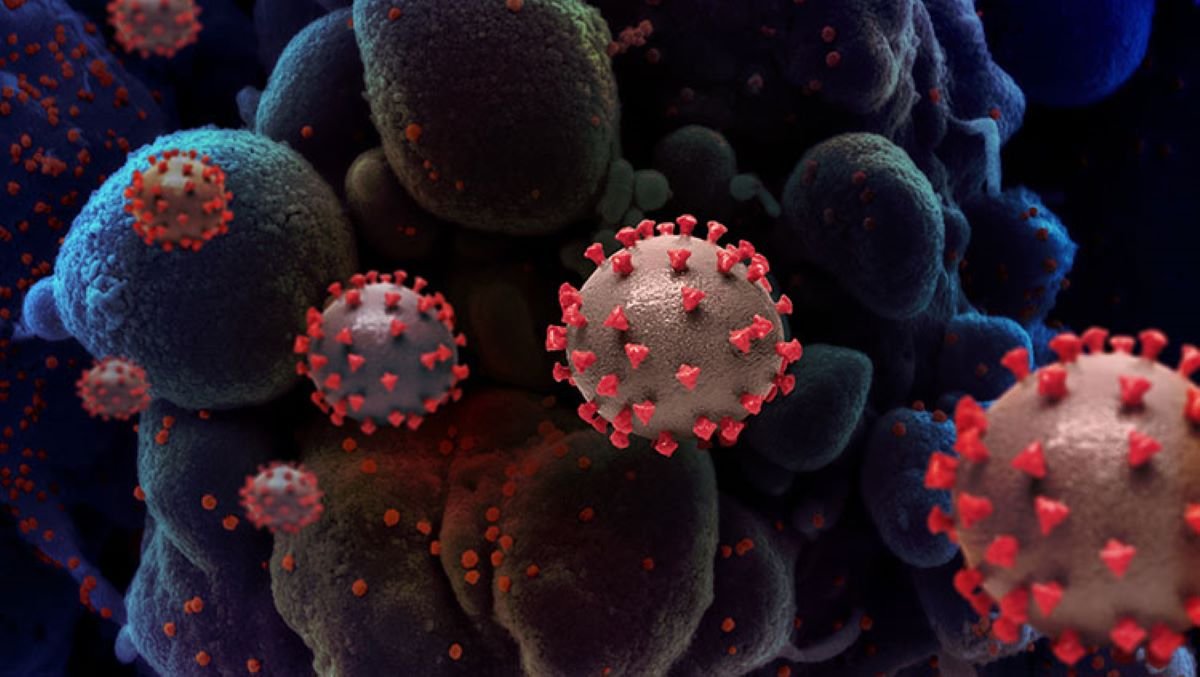
The outbreak of Severe Acute Respiratory Syndrome coronavirus 2 (SARS-CoV-2) has ushered in the unprecedented COVID-19 pandemic. Understanding the virus and its effects on the body, particularly the nervous system, is crucial in navigating these challenging times.
Introduction: Unveiling SARS-CoV-2 and COVID-19

Coronaviruses, typically linked to mild respiratory illnesses like the common cold, took an unexpected turn with the emergence of SARS-CoV-2, causing the global spread of COVID-19. This disease showcases a diverse range of symptoms, from mild discomfort to severe respiratory distress.
Neurological Impacts Unraveling the Connection
Research underscores that neurological symptoms associated with COVID-19 likely stem from the body’s immune response rather than direct viral invasion. Comprehensive studies analyzing cerebrospinal fluid have revealed the presence of antibodies, offering insights into the intricate interplay between the virus and neurological complications.
Immediate Effects on the Nervous System A Closer Look

While a significant proportion of individuals infected with SARS-CoV-2 experience mild symptoms, those requiring hospitalization often face brain-related complications. These can manifest as muscle aches, headaches, and, in severe cases, seizures or strokes. Understanding these immediate effects is paramount in providing holistic care to COVID-19 patients.
Vascular Complications and Blood Clots A Silent Threat
The virus’s interaction with receptors on blood vessel cells presents a silent threat, leading to vessel weakening, leakage, and microbleeds in the brain. Moreover, COVID-19 induces blood clot formation, heightening the risks of strokes, heart attacks, and organ damage. Maintaining optimal oxygen levels becomes imperative in preventing cognitive disorders and other severe consequences.
Recovery and Long Term Effects The Road to Healing
While a majority recover within weeks, a subset of individuals grapple with prolonged dysfunction across various body systems. The term “long COVID” encapsulates persistent symptoms, such as fatigue, cognitive difficulties, and pain. Recognizing and addressing these lingering effects is essential for promoting the well-being of those affected and informing future healthcare strategies.
Connection to Neurological Disorders Assessing Risk Factors
Individuals with pre-existing neurological conditions may confront an elevated risk of severe illness from COVID-19. Understanding the virus’s impact on the immune system emphasizes the need for vigilance in monitoring potential long-term complications, including stroke, dementia, and muscle and nerve damage.
Striking a Delicate Balance Navigating Neurological Safety in the Realm of COVID-19 Vaccines

In the current landscape of uncertainty, the COVID-19 vaccination stands out as a crucial tool in the prevention of severe illness. While the general consensus is that vaccines are safe, it’s essential to acknowledge that isolated instances of Guillain-Barre Syndrome have been associated with specific vaccine formulations.
The continuous vigilance exercised by authoritative bodies such as the Centers for Disease Control and Prevention (CDC) and the Food and Drug Administration (FDA) plays a pivotal role. This ongoing monitoring ensures that timely updates on vaccine safety are provided, effectively managing the delicate balance between safeguarding health and addressing potential risks.
The benefits of vaccination and the potential risks associated with certain formulations underscores the importance of remaining informed. Individuals are encouraged to stay abreast of the latest information from trusted health organizations, enabling them to make informed decisions about their well-being in the ongoing fight against COVID-19.
FOR MORE INTERESTING ARTICLES Transforming Heart Failure Care: Unveiling Abbott’s ARIES Trial Breakthrough with Aspirin-Free HeartMate 3
Conclusion
In the ever-changing landscape of the COVID-19 scenario, maintaining a well-informed perspective on the virus’s effects on the nervous system is of utmost importance. Building a strong foundation for comprehension involves identifying and applying pertinent keywords linked to SARS-CoV-2, COVID-19, and related subjects.
Amid the persistent challenges presented by COVID-19 globally, having a profound understanding of the virus’s impact on the nervous system becomes a source of empowerment for individuals, enabling them to make wise decisions about their health. The collective effort of staying informed and adhering to recommended guidelines allows us to collectively navigate the uncharted territories of this pandemic, striving towards a future characterized by improved health and unwavering resilience.
Medical Sciences
Nanodrones Against Cancer,UNIST’s Innovation Marks a New Era in Treatment
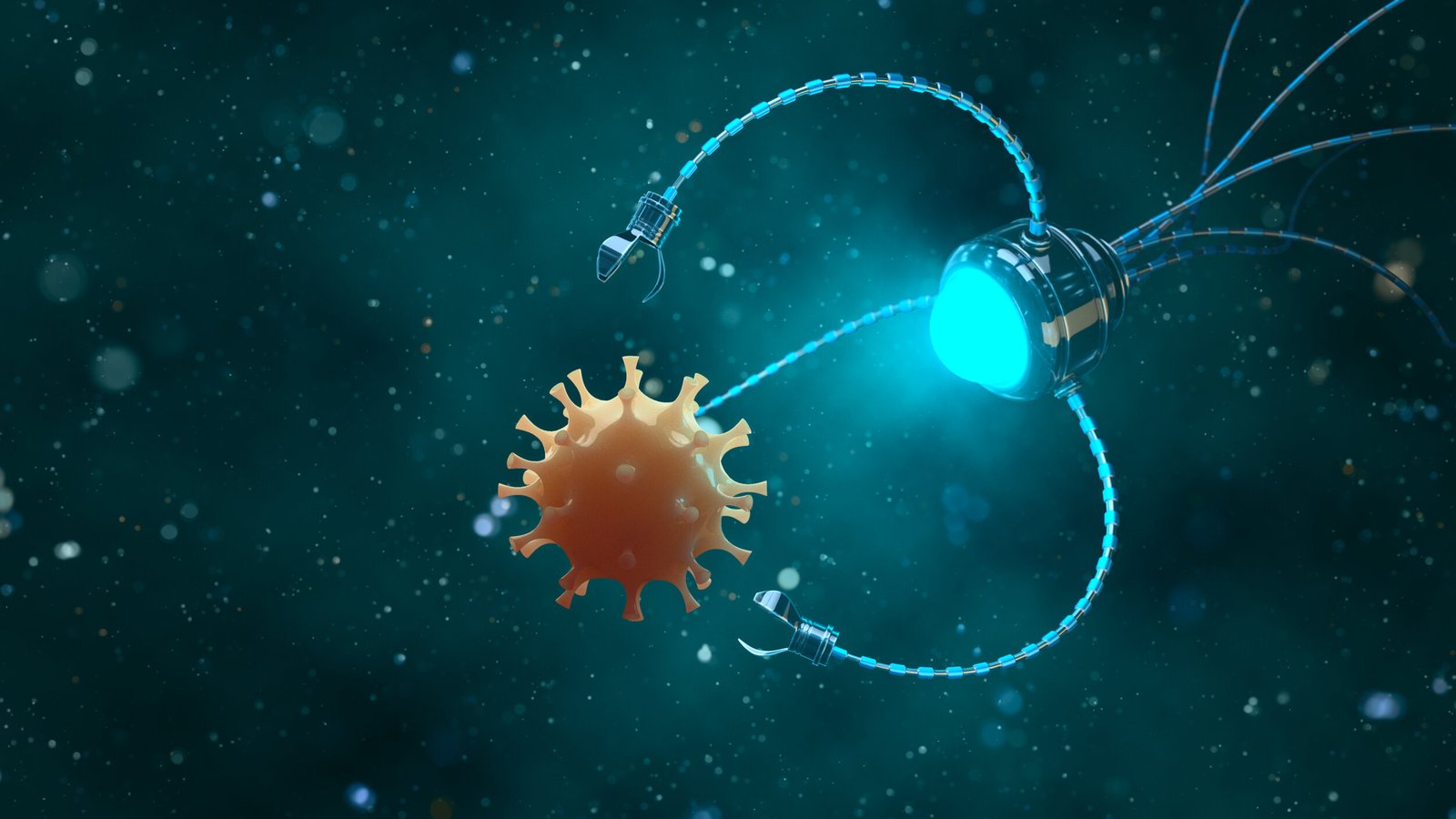
Game-Changer in Cancer Research: UNIST’s Nanodrones Take the Spotlight
In the realm of groundbreaking cancer treatment breakthroughs, the spotlight is now on the Ulsan National Institute of Science and Technology (UNIST), where a dynamic team of researchers has unveiled a potential game-changer. Imagine a world where tiny nanodrones, aptly named NK cell-engaging nanodrones (NKeNDs), take center stage in the fight against cancer.
RELATED ARTICLE New revolutionary nanodrones enable targeted cancer treatment
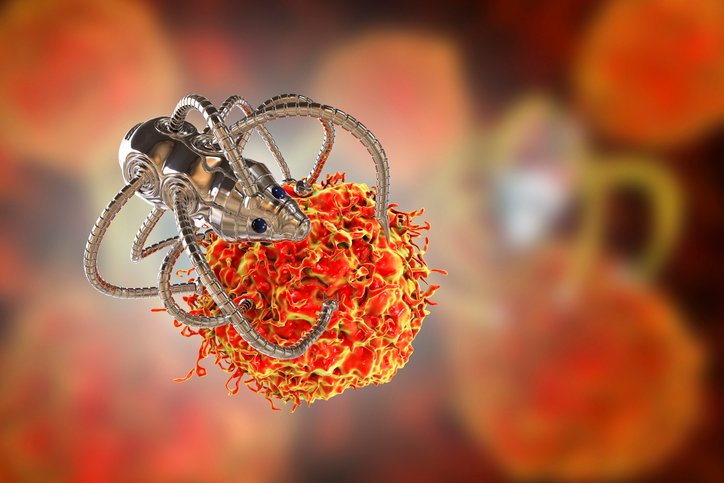
Led by the innovative minds of Professors Sebyung Kang and Sung Ho Park from the Department of Biological Sciences, this team has cracked the code to revolutionize cancer treatment. These nanodrones, far from the futuristic sci-fi portrayals, are engineered to specifically target and obliterate cancer cells, marking a significant leap forward in the battle against this relentless disease.

At the heart of this breakthrough lies the ability of these nanodrones to engage natural killer (NK) cells, the body’s frontline soldiers against cancer. What sets the NKeNDs apart is their precision – think of them as nanoscale guided missiles homing in on cancer cells with unparalleled accuracy. The secret sauce involves utilizing AaLS protein cage nanoparticles as the foundation for these nanodrones, incorporating specific cancer-targeting and NK cell-recruiting ligands, aptly named HER2 @NKeND and EGFR@NKeND.
Lab tests have showcased the remarkable ability of these nanodrones to selectively bind to various types of cancer cells while rallying NK cells to mount a defense against the invaders. The real breakthrough emerged during mice trials, where administering HER2 @NKeNDs alongside human immune cells resulted in a significant slowdown in tumor growth, all without adverse effects.

Professor Kang Se-byung, brimming with excitement, highlighted the potential for customizing treatments for different cancers using these NK cell delivery nanodrones. It’s not merely about targeting cancer cells; it’s about doing so with surgical precision, minimizing collateral damage and maximizing the impact of the body’s immune system.
MORE LATEST ARTICLE Brain Clot Revolution, Vortex Ultrasound Tornado in Brain Health
This groundbreaking study, published in Nano Today, marks a pivotal moment in scientific progress. With the support of various institutions dedicated to advancing knowledge, the door to a new era in cancer treatment swings wide open. Nanodrones may just be the superheroes we’ve been yearning for, offering hope and resilience in the face of one of humanity’s most formidable adversaries. As we raise a toast to science and innovation, the journey towards conquering cancer takes a remarkable leap forward. Cheers to the heroes of the microscopic world.
-
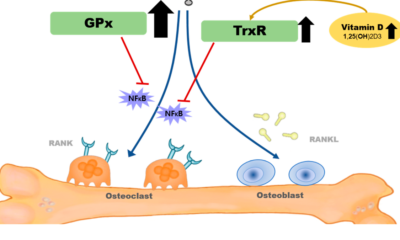
 Medical Sciences8 months ago
Medical Sciences8 months agoSelenium Nanoparticles Redefining Postmenopausal Osteoporosis Treatment with a Novel Approach
-

 Medical Sciences8 months ago
Medical Sciences8 months agoTransforming Heart Failure Care: Unveiling Abbott’s ARIES Trial Breakthrough with Aspirin-Free HeartMate 3
-
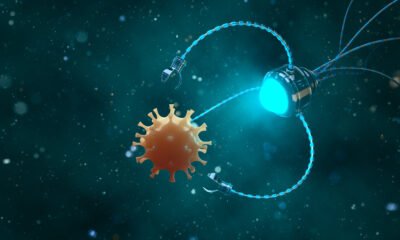
 Medical Sciences7 months ago
Medical Sciences7 months agoNanodrones Against Cancer,UNIST’s Innovation Marks a New Era in Treatment
-

 Medical Sciences8 months ago
Medical Sciences8 months agoGeriatric Care in the Face of Non-ST Elevated Myocardial Infarction and Acute Coronary Syndrome
-

 Blog8 months ago
Blog8 months agoUK’s Milestone In Genetic Medicine,CRISPR Therapy Treating Sickle-Cell Disease and β-Thalassaemia
-

 Medical Research8 months ago
Medical Research8 months agoA New Chapter in Vision Restoration By Rebuilding Retinal Ganglion Cells
-

 Blog8 months ago
Blog8 months agoCutting-Edge Diagnostic Technology Handheld Device for Alzheimer’s and Parkinson’s Diseases
-

 Blog8 months ago
Blog8 months agoNewborn Hearing Screening Can Improve Reading Proficiency Skills
